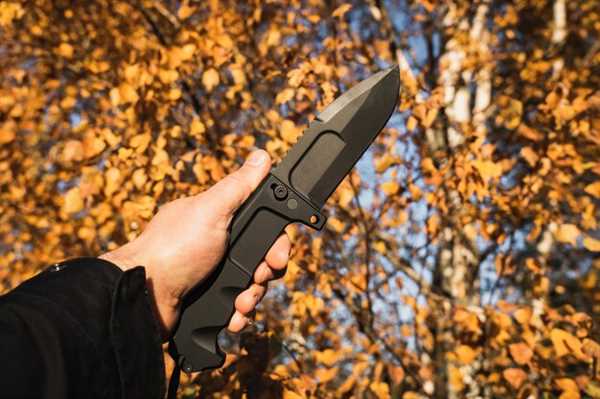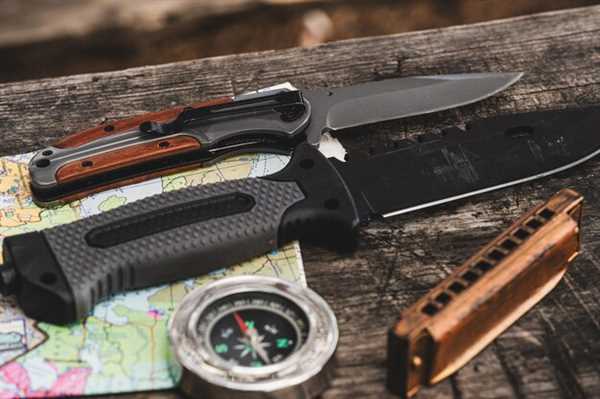
Field tasks require tools that enhance your experience. A quality blade simplifies processes such as skinning, gutting, or even food preparation while out in nature. Aim for a fixed blade with a robust tang for maximum stability. Length should typically range between 4 to 6 inches, providing balance between control and cutting ability.
Think about the handle’s material. Ergonomic designs made from rubber or textured polymers improve grip in wet conditions. For those who prioritize weight, consider a lightweight version with a durable sheath for easy access and storage.
Blade composition matters. Stainless steel resists corrosion, while high-carbon options offer superior edge retention, demanding proper maintenance. A drop-point shape is versatile–ideal for both precision tasks and general use–making it a solid choice for field gear.
Ultimately, practicality trumps aesthetics. Select a blade that fits comfortably in your hand, matches your outdoor activities, and withstands rugged conditions. Prioritize performance to ensure your adventures are successful and enjoyable.
Understanding the Blade Types and Their Uses

Drop point and clip point are two popular blade designs valued for their versatility in outdoor gear. Drop point blades feature a gradual curve, providing better control and a strong tip, making them ideal for skinning and field dressing. Clip point blades have a sharper tip and a straight edge, excelling in piercing tasks and fine detail work.
For tasks requiring added stability, consider a tanto blade. Its angular tip and reinforced spine make it suitable for tough applications, such as processing thick hides or challenging materials. On the other hand, a straight-edged blade maximizes slicing ability, perfect for cutting tasks where precision is paramount.
Convex and serrated edge types serve specific functions. A convex edge offers durability and ease in sharpening, while serrated blades excel at cutting through tough materials like rope or thick vegetation. Each design plays a role in enhancing efficiency and effectiveness of outdoor tools.
Choosing between stainless steel and carbon steel affects performance and maintenance. Stainless steel is resistant to corrosion, making it ideal for wet conditions, while carbon steel maintains sharpness longer but requires diligent upkeep to prevent rust.
Lastly, consider blade length. Longer blades provide leverage for heavy tasks, while shorter ones offer maneuverability in intricate cutting situations. Selecting the right design can significantly impact performance, ensuring your outdoor activities remain effective and enjoyable.
Evaluating Handle Materials for Comfort and Grip
Prioritize materials that enhance comfort and grip to ensure effectiveness during outdoor activities. Micarta and G10 offer excellent durability and a secure hold, making them ideal choices for rigorous use. They provide resistance to moisture and temperature fluctuations, which is crucial for a reliable grip in various weather conditions.
Wood laminates, such as rosewood or walnut, deliver a traditional aesthetic while also providing comfort. The natural grain can improve traction, especially when treated properly. However, they may require more maintenance compared to synthetic options.
Rubberized and thermoplastic materials can be beneficial for a non-slip grip, especially in wet conditions. These handles tend to be soft, absorbing shock and providing comfort during extended usage. For long-term reliability, ensure they have a robust adhesive bond with the blade.
Evaluate the texture of the handle as well. A coarse or contoured surface can enhance control, allowing for precise movements. Test the handle ergonomics through a trial hold to assess how it fits within your hand, ensuring it feels secure without causing fatigue.
Lastly, consider weight distribution. A balanced handle contributes to overall maneuverability, allowing for easier handling during precise tasks or prolonged use. Test various weight profiles to determine what suits your preferences best.
Choosing the Right Size and Weight for Your Activities

For field use, a blade length between 4 to 6 inches is ideal, striking a balance between maneuverability and cutting efficiency. Shorter blades offer precision, while longer ones excel at tougher tasks like processing larger game.
The weight should generally range from 6 to 12 ounces. Heavier options provide durability and stability, while lightweight designs enhance portability, especially for extended treks. Select a model that feels comfortable during prolonged use, ensuring it can be carried without fatigue.
Consider gear configurations as well. A broad blade might be advantageous for certain applications, but a tapered one can facilitate more intricate tasks. Ensure the handle fits your grip style, whether you’re wearing gloves or not.

